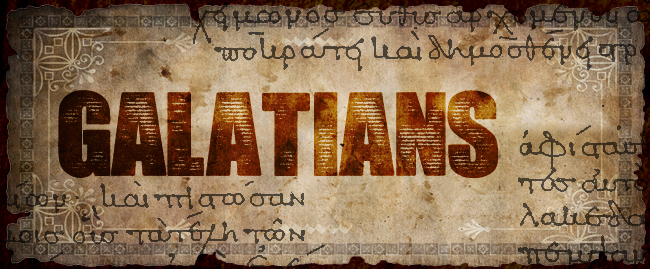Please remember that tomorrow we are having a cook-out in lieu of a lesson. Therefore, there are no readings this week. If you joining us for dinner please RSVP if you have not done so already. We will reconvene our study of Galatians on August 14 and will be reading through Galatians 4:12-31.
The heart of next week’s reading is Paul’s use of the story of Sarah/Isaac and Hagar/Ismael. Please read the story of these two women and their sons in Gen. 16:1-15, 18:1-15, 21:1-21, and 25:7-26. Please notice how Paul uses this story to make his overall point that the heirs of the promise are superior to the heirs of the body and more particularly how Paul’s use of the story (by saying his Jewish opponents are the descendants of Ismael) turns the facts of the Genesis story upside-down. Paul’s concern is not with the genealogy and historicity of the Genesis account, but the deeper spiritual lesson to be drawn therefrom.
Paul specifically says that he is interpreting the story of Sarah, Hagar, and their descendants allegorically. This use raises the question of how Paul uses and understands the Hebrew Scriptures generally. At the time of Paul, other Hellenistic (Greek-speaking) Jews, and particularly Philo of Alexandria (c.20B.C.-40A.D.), saw the Jewish Scriptures as divinely inspired even down to the letter, but whose truth lay in the spiritual, not the historical, meaning of the text. This is the manner in which Paul will generally use his Scriptures – as being God-breathed for the purpose of teaching us lessons and to train us in righteousness (1 Tim 3:16), but not as historical anecdotes. For example, in 1 Corinthians 9:9, Paul writes that the law prohibiting the muzzling of an ox treading grain (Deut. 25:4) is not written in regards to good animal husbandry but rather speaks to the relationship between an apostle and his congregation. Likewise, in 1 Corinthians 10, Paul writes how the stories from the Exodus were written down “typologically” (v.6) and for the purpose of being an “example” (v.11) to teach us. The written story, not the historical event, is the focus. In 2 Corinthians 3, Paul says that the “letter kills, but the spirit gives life” and goes on to say that it is only in the light of Christ that the true (spiritual) meaning of the Hebrew Scriptures can be discerned.
Whether Paul saw the Hebrew Scriptures (and particularly the stories in Torah) as historical narratives conveying actual events or exclusively as divinely inspired allegorical stories conveying spiritual lessons has been subject to debate since the beginning. Within early Christianity, there were two great centers of Christian thought – Antioch in Syria and Alexandria in Egypt. The Antiochians generally emphasized the literal historical method of Biblical interpretation and the physical nature of Jesus (their most famous heretic was Arius who denied the full divinity of Christ). In contrast, the Alexandrians generally emphasized the allegorical and spiritual method of Biblical interpretation, even of the New Testament, and the spiritual nature of Jesus (their most famous heretic was Apollinaris who denied that Jesus had a rational human soul and therefore became a purely spiritualized form of humanity). Overall, however, the early church generally rejected a literal historical understanding of the Old Testament (as being too Jewish), so that there were almost no early Christians who both acknowledged both the authority of the Old Testament and interpreted it literally. (Jaroslav Pelikan has a good discussion on this point in aVol. 1 of the History of Christian Tradition, p.81.) For the most part, the Alexandrian school and its spiritual interpretations of Scripture won out.
In contemporary Christianity, this debate continues over how to appropriately read the Scriptures and more particularly Paul’s understanding of the Old Testament. In the last several months, N. T. Wright, the former Anglican Bishop of Durham, and David Bentley Hart, a Greek Orthodox classics professor at Notre Dame, have engaged in an online debate as to whether Paul understood the Old Testament to be historical (Wright) or strictly allegorical (Hart). A good summary of their debate (with links) is HERE. (A good background of Hart’s position is HERE and HERE.)
If you are joining us tomorrow, please let me know today.
Litera gesta docet,
Gregory the Great (540-604)
Quid credas allegoria,
Moralis quid agas,
Quo tendas anagogia
(The letter shows us what God and our ancestors did;
The allegory shows us where our faith is hid;
The moral meaning gives us the rule of daily life;
The mystical shows us where we end our strife.)


Pingback: Elijah – The Widow of Zarephath (1 Kings 16:30-17:24), pt.2 – Ancient Anglican